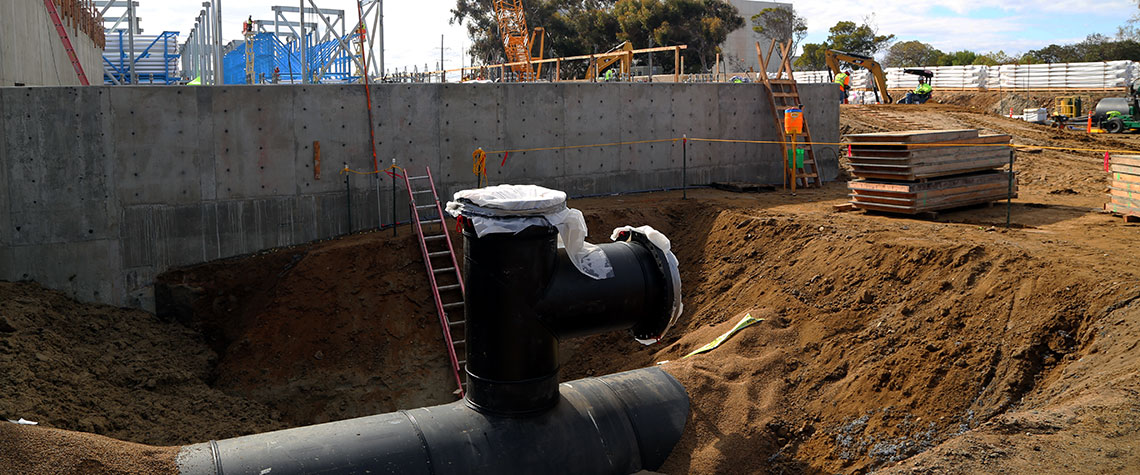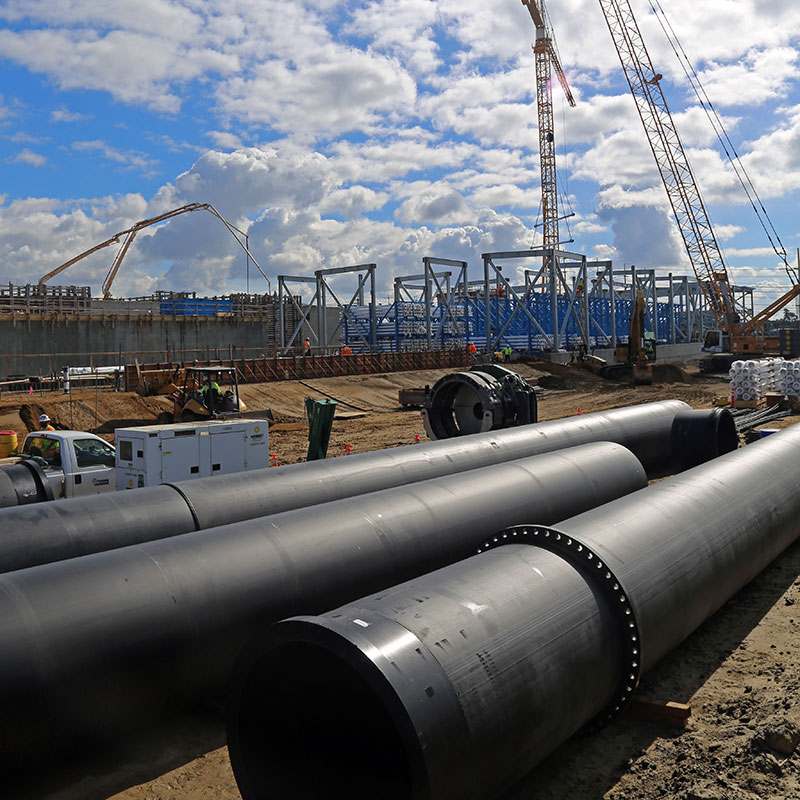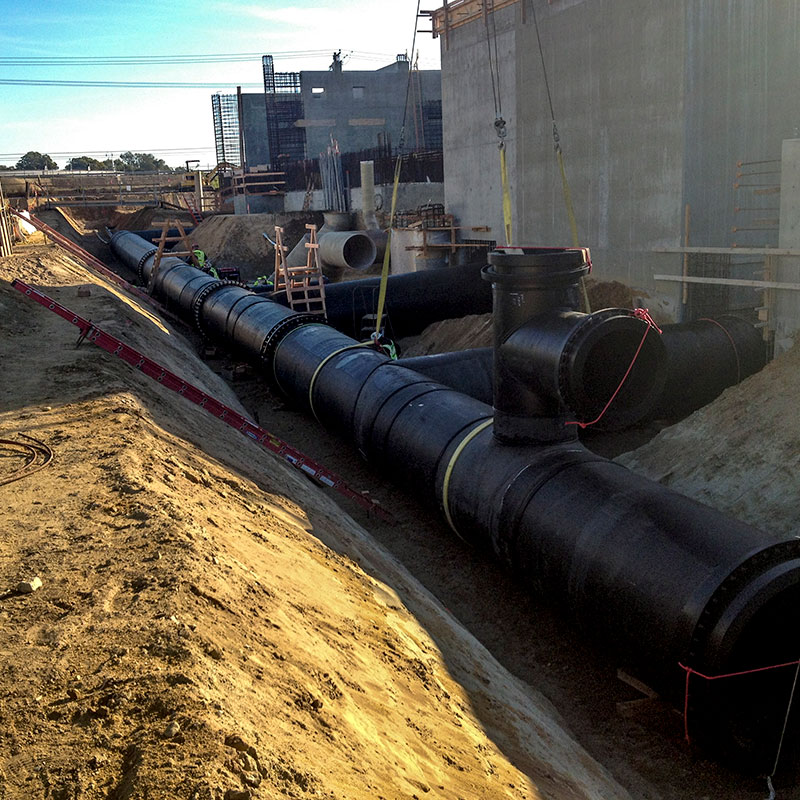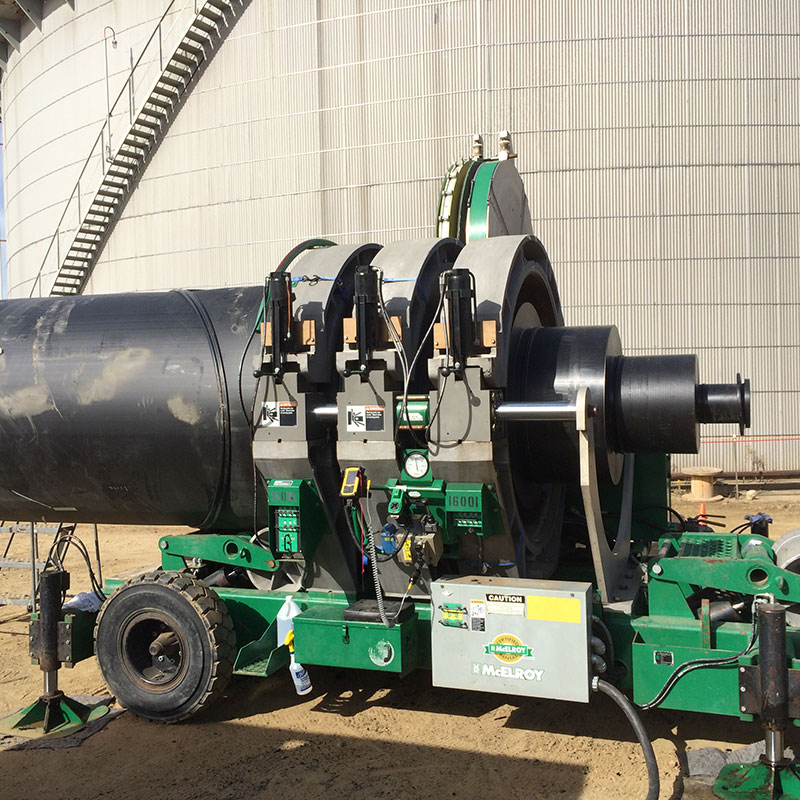
Southern California needs innovative solutions to combat its growing drought problem. And with an ocean of water off the coast, finding a way to turn a drought-proof resource into a potable one is viewed as one of the best insurance policies against rapidly diminishing reservoirs and rivers.
“San Diego County gets most of its water from outside sources like the Colorado River,” said Matt Sternisha, general superintendent with KSD Construction, a joint venture. “They need to diversify for the future.”
So to address anticipated water shortages, county administrators turned to Poseidon Water and KSD Construction to build the largest desalination plant in the Western Hemisphere.
And KSD turned to companies like ISCO, constructing the plant’s brine line, to help put all the moving parts of the project into a comprehensive system supplying residents with potable water.
Desalination projects are not new to arid coastal regions in other countries, particularly in the Middle East.
But in the U.S., all eyes will be on the Carlsbad plant as a cutting edge solution to the increasingly devastating drought problems affecting California and much of the arid West.
“The Carlsbad Desalination Plant is a benchmark project in the United States,” Sternisha said.
The plant and the associated 10-mile water delivery pipeline will produce and convey more than 50 million gallons of potable water per day to residents of San Diego County.
Located at the Encina Power Station in the city of Carlsbad and adjacent to the Pacific Ocean, the facility is connected to the cooling water intake and discharge channels of the power station. The intake pumps will deliver 100 million gallons per day of seawater to the facility, and half of that will be converted to drinking water. The remaining water is returned to the discharge channel via the brine line and diluted with additional seawater before being discharged back into the ocean.

ISCO for Engineering Challenges
More than 300 construction workers are working on the project site – a network of pipes, tanks and engineered equipment designed to turn seawater into what many in the scorched Western states see as liquid gold. Construction required ISCO to supply and assist with the installation of the largest diameter HDPE pipe by the contractor to date, to source hard-to-find pipe and fittings and offer technical expertise.
“This project allowed for considerable flexibility throughout the design and construction process – we modified plans as we identified challenges,” said Sternisha. “ISCO was highly adaptable to changes that occurred and responded quickly as things came up.”
“We chose to work with ISCO as the best value option to facilitate and solve engineering challenges.”

HDPE Pipe for High-Velocity Flow
Fiberglass pipe was originally specified to be used for the brine line, which carries the seawater discharge from the reverse osmosis process to the lagoon where it is diluted. There was concern, though, that fiberglass couldn’t handle the high velocity of flow in the line – a 16 percent slope with 20 feet per second velocity at maximum flow conditions. Working with ISCO, KSD decided HDPE was the best choice due to its ability to handle high velocity flow and withstand a corrosive environment.
The 63-inch diameter HDPE pipe used created its own set of challenges -- particularly in sourcing the pipe and fabricating fittings.
The availability of 63-inch pipe and fittings in the U.S. is extremely limited. But ISCO was able to supply the pipe and manufacture fittings in a timely manner through dedicated customer service, technical expertise and strong relationships within the HDPE industry.

Critical Design Support
Facilitating the flow of design information between the project design engineers, KSD and HDPE manufacturers, ISCO played a critical role in obtaining the appropriate pipe performance characteristics and satisfying the design criteria for the brine line.
“ISCO was the only HDPE provider able to meet the required design information to satisfy all parties involved in the 63-inch brine line design and construction,” said ISCO representative Joe Chammas. “But it wasn’t only ISCO’s design support that secured the project – ISCO’s equipment resources and experienced field installation knowledge allowed us to be responsive in a time-sensitive situation.”
ISCO supplied 1,850-feet of 63-inch HDPE pipe and more than 100 HDPE fittings from 20-inch elbows to 63-inch tees. In addition, ISCO provided KSD with three fusion machines – a 63-inch 1600mm unit, a 36-inch unit and an 8-inch combo saddle/fusionunit.

Job-site Fusion and Technical Support
As soon as the pipe and fittings reached the project site, ISCO delivered the 63-inch 1600mm fusion machine and provided a field technician to operate the machinery and provide brine line fusing services. The field technician not only provided fusion welding services, but addressed project flow and the welding sequence of the pipe and fittings to complete the line quickly and efficiently.
Twelve years in the making, the Carlsbad Desalination plant and 10-mile distribution pipeline is scheduled to be finished in 2016. Just in time to supply much-needed water to residents of an increasingly parchedcommunity.
SUBSCRIBE TO ISCO UPDATES
ISCO Updates
[gravityform id="21" title="true"]
